401 Views
This Grand Piano Has a New Finish...and TONS of New Parts Inside Too!

by
CK
(IC: professional)
250 Hours
Advanced
On one of my most recent Q&A posts I asked the question "To paint or not to paint" when it comes to wood furniture, floors, walls, etc. http://www.hometalk.com/diy/paint/furniture/q-painted-furniture-wood-debate-4384388
Well that question can also be asked of pianos! In our area no one wants to tackle refinishing a piano. We don't really know why because when my husband, a Registered Piano Technician, removes e.v.e.r.y.t.h.i.n.g from the inside, all that's left is a 'cabinet' not unlike any other piece of furniture, say a dresser for example. Be that as it may, we've only refinished a few pianos because it is VERY tedious, extremely time consuming and quite expensive. Then you add on the cost of parts and labor to overhaul/rebuild the piano itself (all it's working parts) and it's nearly astronomical to the average piano owner.
This grand piano (currently for sale BTW) came to us in the saddest of shape. It didn't play well, its finish was horribly ruined by time and elements, some of it's original ivory keys were missing or broken. (All pianos since 1968 now have plastic white keys.) We talked about trying to refinish it back to its original finish but very quickly realized it was not going to work. What to do? My husband has rebuilt many pianos (both uprights and grands) but refinishing is almost a separate business...one we chose not to get into.
Saving you from all the months of restoration/rebuild of this piano, I'm fast forwarding to the days when it finally got its new finish. It's old finish (what was left of it) was removed by a combination of stripping and sanding. Where the veneer was gone we filled in with wood putty where possible and sometimes had to remove entire pieces of broken veneer.
After a thorough cleaning (while each and every individual piece of the cabinet was taken apart) we then spray painted it! Yes, spray paint: Rustoleum Oil Rubbed Bronze to be exact :-) It was back to nearly it's original color but with a little glint of 'metallic magic'...as one person put it.
The finish of the piano and bench is smooth and durable. The inside plate (the cast iron part) too got a new finish of satin gold spray paint. The inside of the bench also received that color. All brass parts (hinges, feet, etc.) were thoroughly scrubbed with metal cleaner to a fresh new look and sealed with clear polyurethane spray.
That's the story of how a piano can get a new finish for far less and still look stunning. Of course it's very pretty, and from a decorator point of view, I love it. But from my point of view as a pianist as well, the beautiful warm sound it has is heavenly...and for that I have my husband to thank. (We worked on the cabinet finish together but he's the technician that makes the pianos sound like Heaven's angels.)
This piano was actually going to go to the dumps had we not rescued it. My husband gave it new life from within and together we gave it new life on its outside. To us it was a win/win for a piano that will give many more years of pleasure to its new owner.
BTW you can contact us through my husband's website if you're interested in purchase. www.ericnikiforoff.com
Well that question can also be asked of pianos! In our area no one wants to tackle refinishing a piano. We don't really know why because when my husband, a Registered Piano Technician, removes e.v.e.r.y.t.h.i.n.g from the inside, all that's left is a 'cabinet' not unlike any other piece of furniture, say a dresser for example. Be that as it may, we've only refinished a few pianos because it is VERY tedious, extremely time consuming and quite expensive. Then you add on the cost of parts and labor to overhaul/rebuild the piano itself (all it's working parts) and it's nearly astronomical to the average piano owner.
This grand piano (currently for sale BTW) came to us in the saddest of shape. It didn't play well, its finish was horribly ruined by time and elements, some of it's original ivory keys were missing or broken. (All pianos since 1968 now have plastic white keys.) We talked about trying to refinish it back to its original finish but very quickly realized it was not going to work. What to do? My husband has rebuilt many pianos (both uprights and grands) but refinishing is almost a separate business...one we chose not to get into.
Saving you from all the months of restoration/rebuild of this piano, I'm fast forwarding to the days when it finally got its new finish. It's old finish (what was left of it) was removed by a combination of stripping and sanding. Where the veneer was gone we filled in with wood putty where possible and sometimes had to remove entire pieces of broken veneer.
After a thorough cleaning (while each and every individual piece of the cabinet was taken apart) we then spray painted it! Yes, spray paint: Rustoleum Oil Rubbed Bronze to be exact :-) It was back to nearly it's original color but with a little glint of 'metallic magic'...as one person put it.
The finish of the piano and bench is smooth and durable. The inside plate (the cast iron part) too got a new finish of satin gold spray paint. The inside of the bench also received that color. All brass parts (hinges, feet, etc.) were thoroughly scrubbed with metal cleaner to a fresh new look and sealed with clear polyurethane spray.
That's the story of how a piano can get a new finish for far less and still look stunning. Of course it's very pretty, and from a decorator point of view, I love it. But from my point of view as a pianist as well, the beautiful warm sound it has is heavenly...and for that I have my husband to thank. (We worked on the cabinet finish together but he's the technician that makes the pianos sound like Heaven's angels.)
This piano was actually going to go to the dumps had we not rescued it. My husband gave it new life from within and together we gave it new life on its outside. To us it was a win/win for a piano that will give many more years of pleasure to its new owner.
BTW you can contact us through my husband's website if you're interested in purchase. www.ericnikiforoff.com
This grand piano has been rebuilt/overhauled and has a new finish.... Because its exterior finish was so badly damaged, we gave it a new spray painted finish that's durable as well as lovely.
The plate (the metal part) also got a new finish by using satin gold paint. You can see many of the new parts here including new strings, new tuning pins, new felt, etc.
This side of the piano had virtually no finish left on it because it faced the sunshine for years and years. Thankfully after sanding and spray painting, you can still see the pretty grain of the wood...and it's wonderfully smooth.
Because it was built in 1929, it still was made with real ivory keys. Some were loose, some were gone. Thankfully we had a few salvaged from pianos that people threw away to the landfill.(yes threw away).
Newly shined pedals, hinges, latches add to its beauty. It's a joy to play, a joy to listen to and a joy to view.
Enjoyed the project?
Published August 27th, 2014 2:25 PM
Comments
Join the conversation
2 comments
-
I know more about violins than I do about pianos, but I was under the impression that pianos were intended to have a true lacquered and/or hand-rubbed finish over natural wood. I know that you would never, ever paint a violin that was intended to be played, and I think the reasoning is the same. Paint would change the tone of a violin for a number of reasons, the first of which is that paint is only applied to the outside surface of the instrument, effectively sealing the pores on the painted side so that the natural flexing of the wood that happens with changes in heat and humidity can only happen from one side. It's the same reason that when you paint your kitchen cabinet doors you paint them inside and out, so they continue to open and close the same way, particularly if your doors are hardwood and not plywood, This is even more true if your cabinet doors are inset. Getting back to the question, when you made the decision to paint the piano, did you consider the possibility that the original tone would be irretrievable unless in some future life someone else took the instrument all the way back down to the wood? Your husband is a tech; can he also tune and sound? In that case, I would have to bow to his vastly superior knowledge, but if I'm wrong about the change painting would make, I'd like to know why, just for my personal edification. Thanks.
 Jackie Johnson
on Aug 28, 2014
Jackie Johnson
on Aug 28, 2014
-





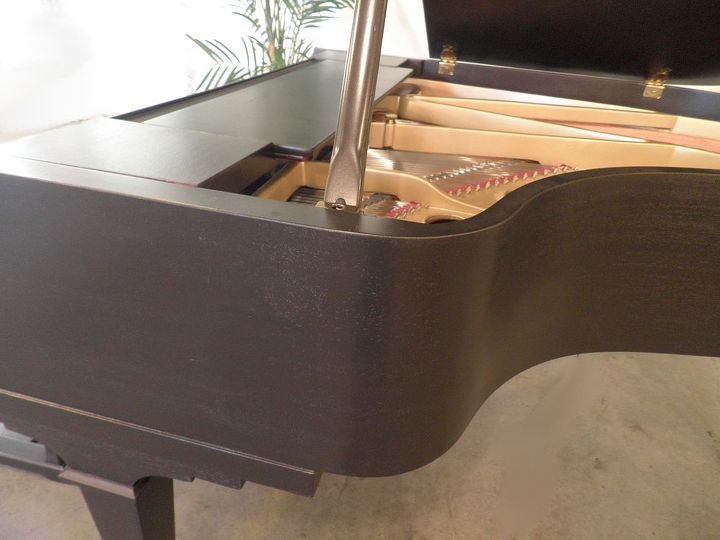


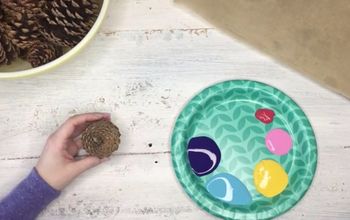




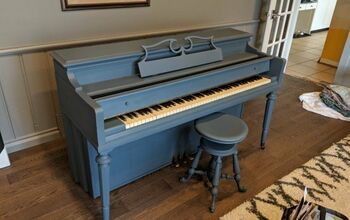
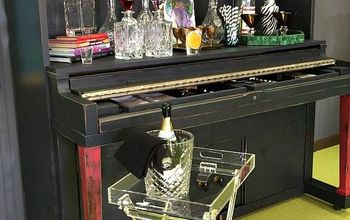

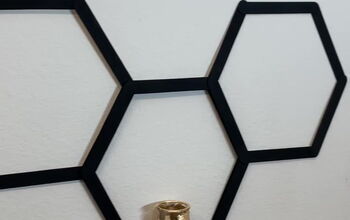



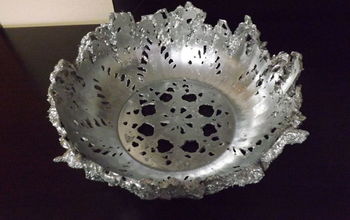




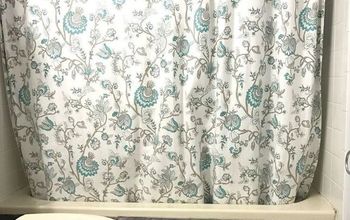



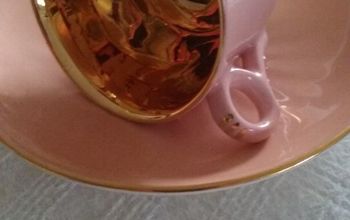
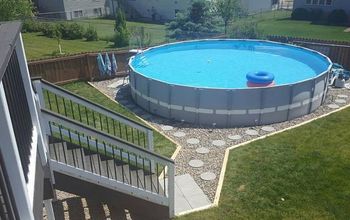
Frequently asked questions
Have a question about this project?